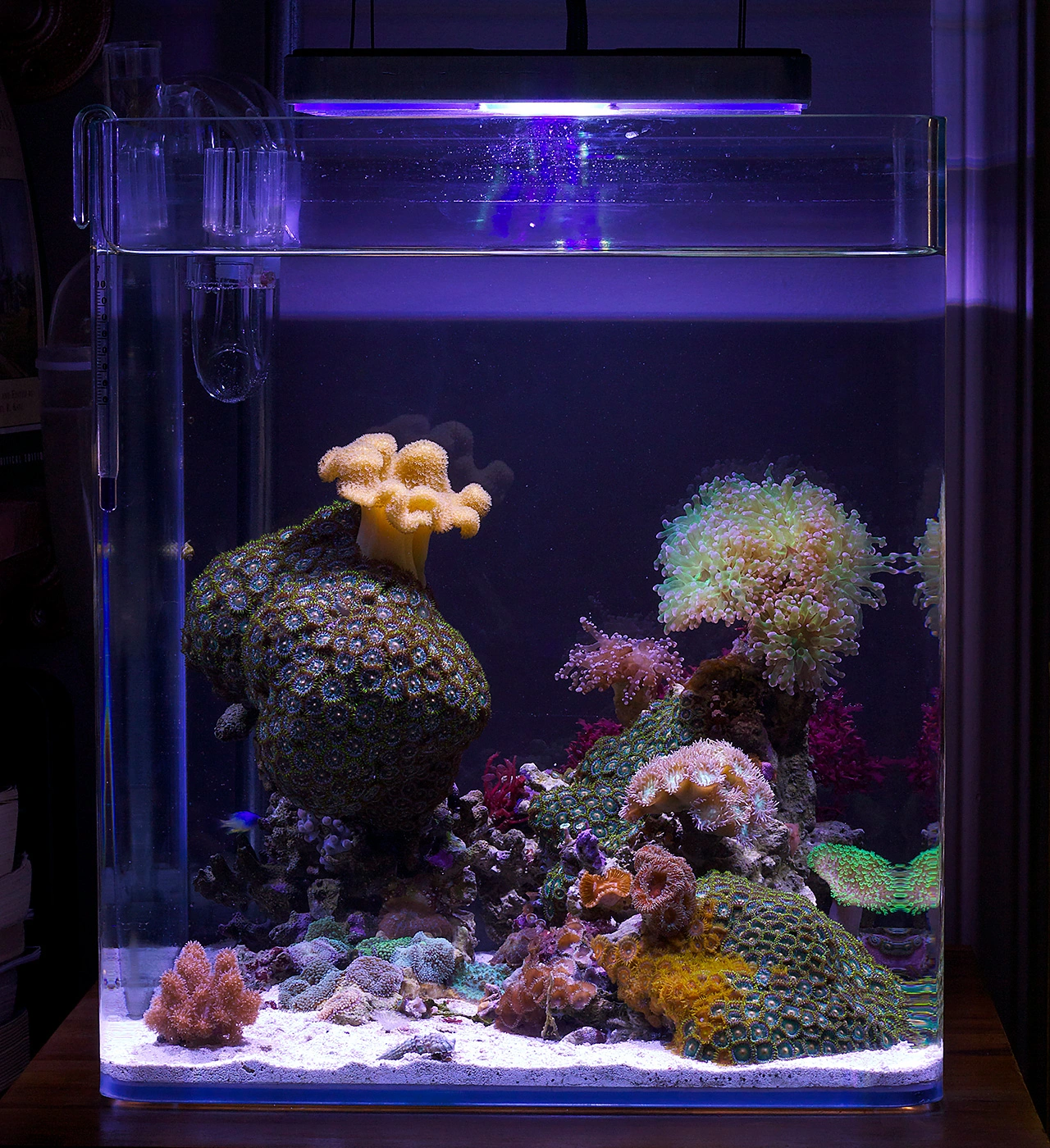Stunning 9-Gallon Reef Tank – Justind823's TOTM | NanoReef

Tank Specifications
Volume: 9 Gallons / 34 Liters
Dimensions (L × W × H):
12.0" ×
12.0" ×
14.0"
30.5cm ×
30.5cm ×
35.6cm
Equipment List
- Salt: Instant Ocean
Frequently Asked Questions
What is the maintenance routine for a healthy reef tank?
To maintain a healthy environment for the animals, a regular maintenance routine is key. Here’s a typical schedule: - Visual inspection of animals and hardware: daily to catch any issues early. - Glass cleaning: every two days to ensure clarity. - Water change: perform a 2-gallon water change with Reef Crystals salt weekly to keep water parameters stable. - Auto top-off (ATO) reservoir refill: bi-weekly refill with Kalkwasser mixed RODI to support coral growth. - Thorough cleaning of overflow and pumps: bi-monthly to prevent buildup and maintain circulation.
How often should I feed the inhabitants of my nano reef tank?
Feeding schedules can vary based on your tank's inhabitants, but here’s a general feeding guide: - For Sexy Shrimp: 1 pellet daily. - For fish (if present): Consider 1 pinch of Formula One flake food every two days. - For a variety of corals, broadcast feed with Hikari Frozen Mysis, about 1/4 cube weekly, ideally the day before performing the 2-gallon water change.
What types of corals are suitable for a beginner in a nano reef tank?
For beginners, it's best to stick with hardy, low-demand corals. In this tank, suitable options included: - Soft Corals: Yellow Fiji Leather, Green Polyp Toadstool Leather, Assorted Ricordias, Zoanthids, and Blue Star Polyps. - LPS Corals: Acanthastrea and Frogspawn. These corals can thrive with comparatively simpler care and can fill out a tank nicely.
What fish species are compatible with a 9-gallon reef tank?
In a 9-gallon nano reef tank, opt for smaller, hardy species that are less aggressive. The owner successfully keeps juvenile Yellowtail Damselfish which are resilient and can adapt well. However, consider the tank's bioload and ensure not to overstock.
What should I do if my reef tank experiences an alkalinity swing?
If you suspect an alkalinity swing, consider the following steps: 1. Test the water parameters to confirm the swing. 2. Ensure stable dosing of supplements like Kalkwasser, as inconsistency can lead to fluctuations. 3. Make gradual adjustments to alkalinity with buffer solutions if needed, steering clear of rapid changes as this can stress corals. 4. Regular monitoring following the adjustment is crucial for recovery.
How can I reduce heat in my reef tank setup?
To manage heat within your nano reef tank setup: - Use efficient LED lighting, as it generally produces less heat compared to other types of light. - Position your tank away from direct sunlight and heat sources. - Incorporate fans or cooling devices if necessary. This can help enhance air circulation and reduce overall tank temperature.